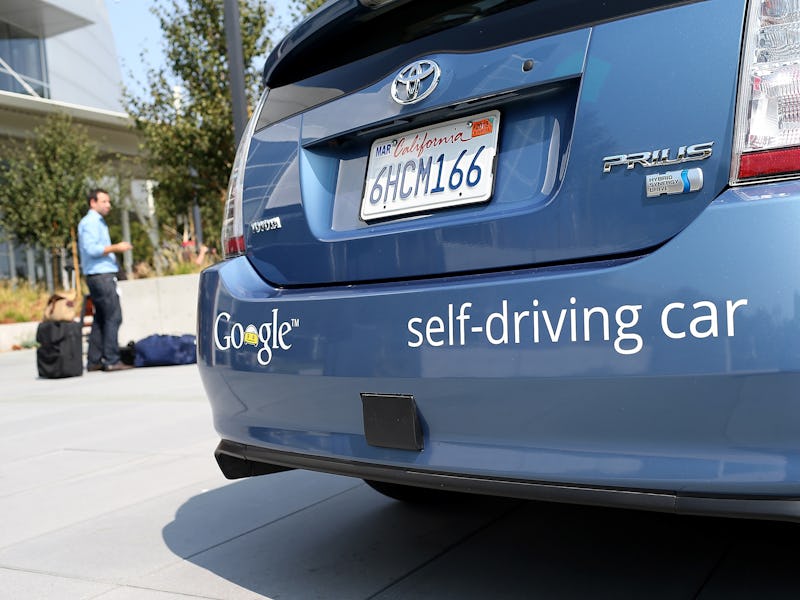The Future of Driverless Cars: Where We’re Going, We’ll Need More Roads
Autonomous vehicles = mo' cars, mo' problems.

Driverless cars are arriving (silently, safely) with a lot of hype: the potential for increased safety on the road, less traffic, lower environmental impacts, and just the plain fact that you can do a lot of other things during your commute. Of course, there are concerns about what exactly autonomous vehicles mean when it comes to liability and responsibility — and these issues are still being debated.
But the biggest negative that no one really talks about is how driverless cars probably mean more roads — which means most of the other positives we would hope to gain from this technology would basically be nullified.
Those are the conclusions from a new study conducted by University of Leeds researchers, who say the future of driverless cars means increasing our reliance on roads will not actually decrease traffic demands, but simply put more cars on the road and further exacerbate energy inefficiencies.
The findings, reported in the journal Transportation Research Part A, were made using analysis of self-driving technology along with current data on automotive vehicle costs. The researchers modeled the adoption of automated vehicles for the next several decades, and found that driverless vehicles could provide great efficiency benefits only to an extent.
This would be because automated vehicles might become a more attractive transportation method in instances where someone would have normally taken the train or bus or another alternative. Driverless cars might be such an appealing option that we end up putting more cars on the roads. In turn, we’ll have to build more roads, renovate and widen the ones we already have, and face worse traffic conditions.
The researchers estimate an overall 5 to 60 percent increase in car energy consumption by the year 2050 due to driverless cars. Two to 10 percent of this increase is because of spike in mobility by the elderly and disabled; 7 to 22 percent is due to higher speed limits (because of improved safety conditions); and up to 11 percent is caused by heavier equipment like TV screens and computers being installed into such vehicles.
But a 5 to 60 percent is a pretty expansive range. What gives? Well, part of the reason is because the authors aren’t yet sure how enthusiastic future generations will be about car sharing, or if future vehicles will turn out to be smaller and more compact. Those factors could actually cut energy consumption down by 21 to 45 percent.
The big takeaway, the researchers found, is that society needs to slow down driverless cars. Not in terms of literal speed — in terms of introducing and advancing the development and adoption of the technology. If automated vehicles become the new normal, we’ll need to find ways to standardize car networking protocols so that different vehicles can communicate with one another and behave as a coordinated system.
Another solution may be to allow transportation officials to access car navigation and communication data to design road pricing schemes aimed at getting more cars off the road. People won’t be happy about it, but it’s clear the world needs to wean itself off the car in favor of other modes of transportation. Driverless car development needs to be part of that goal.